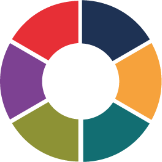Knowing how the people within your organisation are coping with their work/life balance is key to the productivity of your business. 10.4 million working days are lost each year in Britain due to work related stress and it goes without saying that the pressures of the workplace are ever increasing in today’s world.
In a recent survey, the Mental Health Foundation found that one third of respondents felt unhappy or very unhappy, about the time they devote to work, with 40% of respondents feeling that they neglect other aspects of their life due to work.
It is therefore essential that your organisation ensures that the channels of communication are open between leaders and employees. By encouraging employees to feedback their thoughts to you, you will be made aware of any discontent within your organisation and be better able to assist those who are struggling which will, in turn, minimise working days lost to work-related stress.
Once this feedback has been gathered, leaders then need to act on this to motivate the team and increase performance. If you foster a satisfied and encouraged team, the struggles to achieve a sense of work/life balance will ease, and work will become a thing which is integrated into your employees lives, not something which they feel unhappy about.
How can the PCS tool help?
PCS can be used on teams of any size, within any organisation, providing a robust means of tracking performance and satisfaction of the team and organisation over time.
By using the tool, you will be able to measure the satisfaction of your employees and your business can gain unbiased feedback which will enable you to identify elements of practice, policy or culture that could be detrimental to both a healthy work/life balance and productivity.
The data accumulated by the PCS report assists in the diagnosis of performance issues and risks, helping organisations to assess what is driving and hindering team performance and satisfaction. Based on the insights provided by the PCS report, consultants can help their clients to eliminate pain points and invest in interventions which will benefit their organisations and employees most effectively.
Download a free sample report here.
Find out more about PCS and get in touch here.


